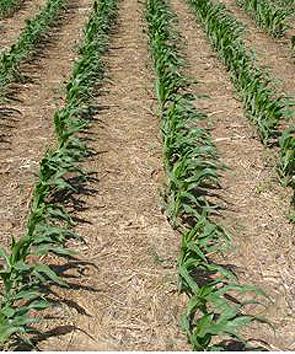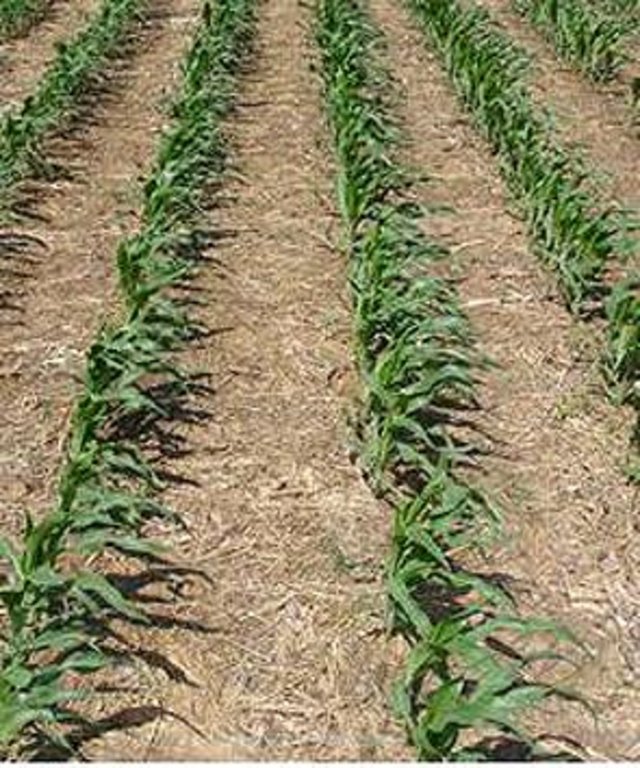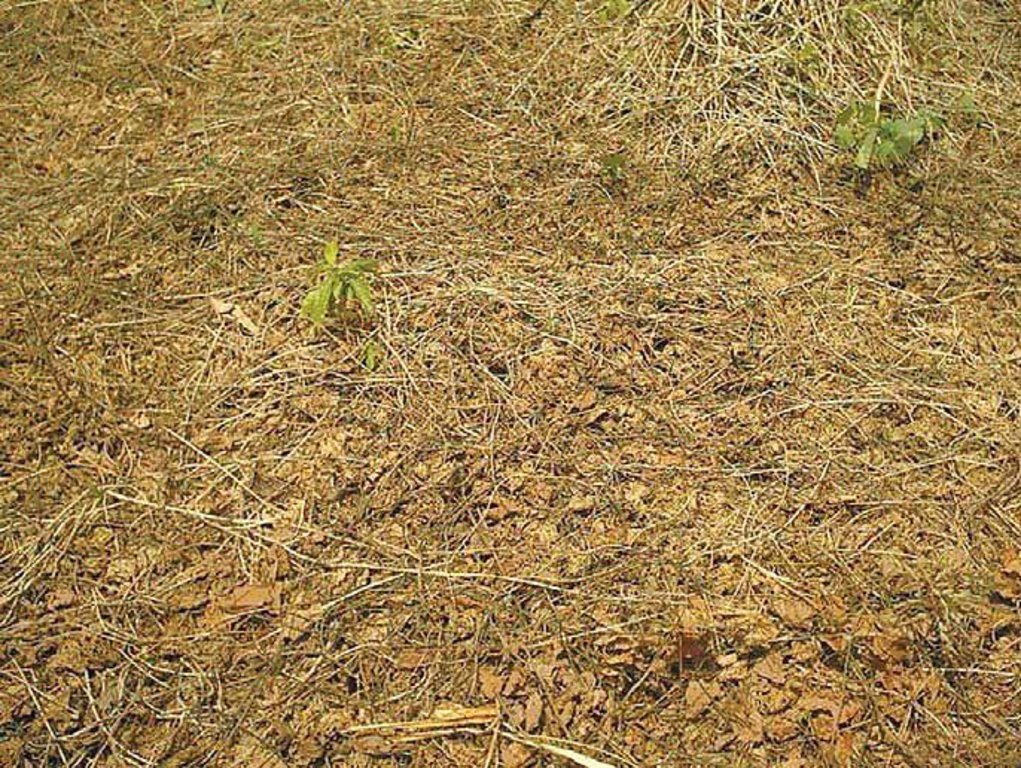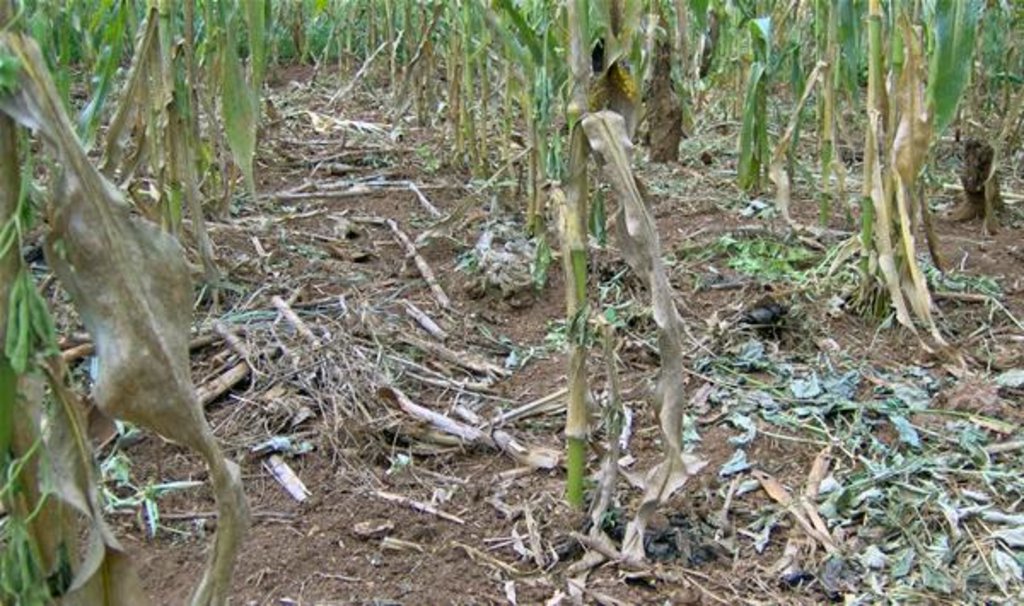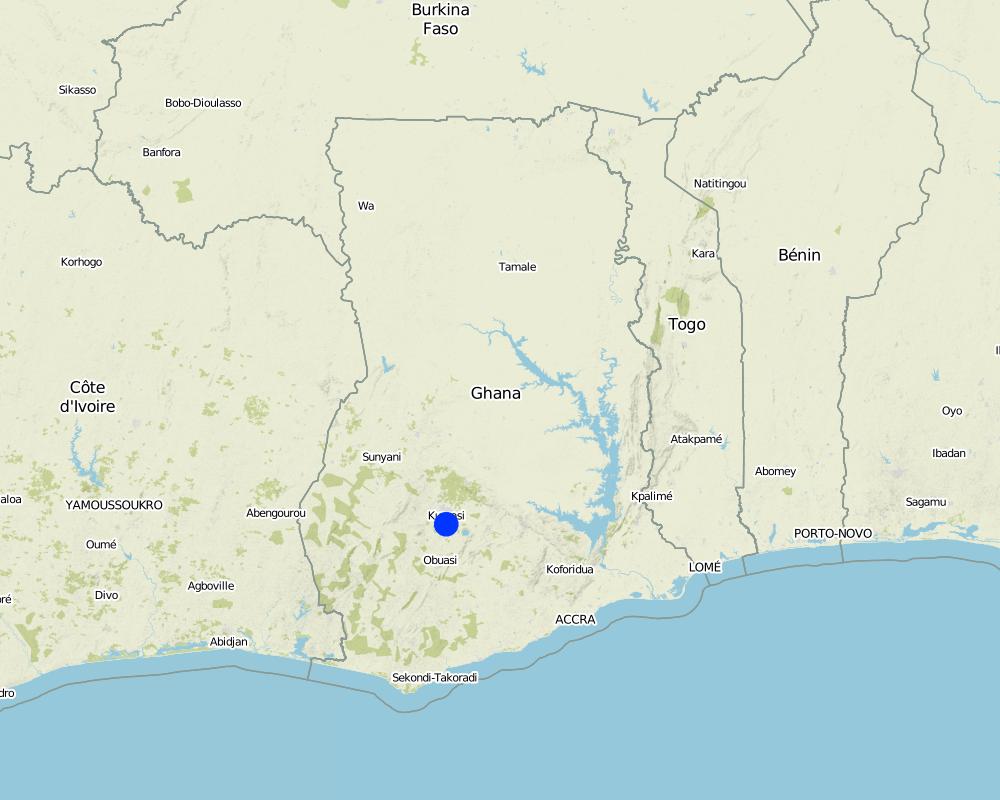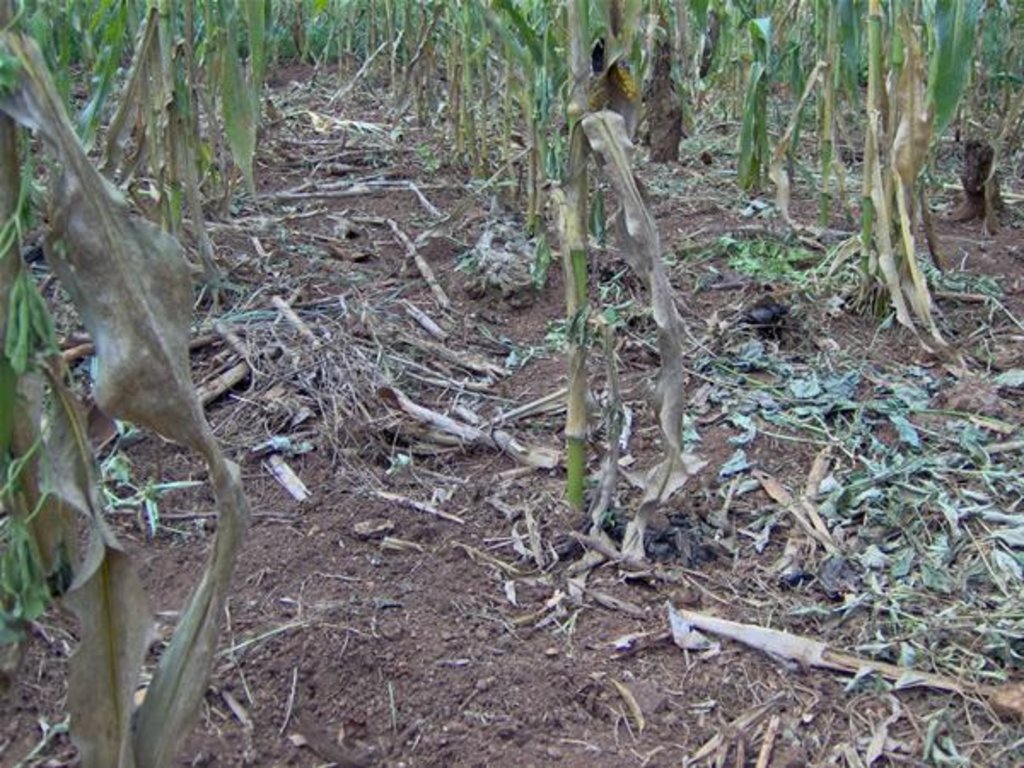Minimum Tillage and Direct Planting [غانا]
- تاريخ الإنشاء:
- تحديث:
- جامع المعلومات: Unknown User
- المحرر: –
- المُراجع: Fabian Ottiger
technologies_1329 - غانا
عرض الأقسام
توسيع الكل طي الكل1. معلومات عامة
1.2 تفاصيل الاتصال بالأشخاص الرئيسيين لمصدر المعلومات والمؤسسات المشاركة في تقييم وتوثيق التقنية
الشخص (الأشخاص) الرئيسي لمصدر المعلومات
متخصص في الإدارة المستدامة للأراضي:
Adjimon Souroudjaye
volenvicon@gmail.com
Volta Environmental Conservation Organization
غانا
اسم المشروع الذي سهّل توثيق/تقييم التقنية (إذا كان ذلك على صلة)
Book project: SLM in Practice - Guidelines and Best Practices for Sub-Saharan Africa (SLM in Practice)1.3 الشروط المتعلقة باستخدام البيانات الموثقة من خلال WOCAT
يوافق جامع المعلومات والشخص (لاشخاص) الرئيسي لمصدر المعلومات على الشروط المتعلقة باستخدام البيانات الموثقة من خلال WOCAT:
نعم
2. وصف تقنيةالإدارة المستدامي للأراضي
2.1 وصف مختصر للتقنية
تعريف التقنية:
Minimum tillage and direct planting are two conservation agriculture practices which basically consist of leaving crop residues on the soil surface without burning and subsequent planting through the mulch.
2.2 وصف تفصيلي للتقنية
الوصف:
The traditional slash-and-burn land use system in the case study area – involving clearing natural vegetation followed by 2-5 years of cropping – has become unsustainable as land pressure has greatly increased, shortening fallow periods. Under the SLM practice of ‘minimum tillage and direct planting’, land is prepared by slashing the existing vegetation and allowing regrowth up to 30 cm height. A glyphosate-based round-up herbicide (Round-up, Chemosate or Helosate) is sprayed with a knapsack fitted with a low-volume nozzle. The residue is left on the soil surface without burning. After 7–10 days, direct planting is carried out in rows through the mulch. Maize is the main crop planted under this system. Planting is practiced manually using a planting stick.
Purpose of the Technology: The mulch layer has several important functions: it helps to increase and maintain water stored in the soil, reduces soil erosion, contributes to improve soil fertility (after crop residues have decomposed in subsequent seasons) and it efficiently controls weeds by hindering their growth and preventing weeds from producing seeds. The use of herbicides requires adequate knowledge. An even better option is to introduce multipurpose cover crops to control weed populations, improve soil fertility, and enhance yields while diversifying crop production and thus reducing dependence on the use of herbicides. Labour inputs for land preparation and weeding is considerably decreased under conservation agriculture. Women benefit most from the workload reduction since these time-consuming activities are their task. For men, the new technology usually means heavier work, especially during the 1st year, since they have to plant through the mulch. Using a jab planter makes the work easier
Establishment / maintenance activities and inputs: Minimum tillage and direct planting includes the following recurrent activities: 1. Initial land clearing: slash existing vegetation and allow regrowth (up to 30 cm); before onset of rains season.
2. Spraying of pre-emergence herbicide; 300 ml (2 sachets) for every 15 litres water for annual weeds; 450 ml (3 sachets) for every 15 litres water for perennial weeds.
3. Leave residues on the soil surface without burning.
4. Planting through the mulch.
5. Spraying post-emergence herbicide; after regrowth of weeds (7-10 days after planting).
6. Harvesting.
All activities are carried out manually (each cropping season) using jap planter (or a planting stick) and knapsack sprayers.
Natural / human environment: Both case study areas fall within the wet semi-equatorial zone of Ghana with a mean monthly temperature of between 23 °C and 33 °C (SDA 1995). Rainfall is bimodal in both districts with a peak rainy season from the end of March to July and again from September to November, after a short dry spell in August. In general soil characteristics in the study areas vary from well drained with high organic matter content in the forest area, to poorly drained with low organic matter content in the savannah belt.
2.3 صور التقنية
2.5 البلد/المنطقة/المواقع التي تم تنفيذ التقنية فيها والتي يغطيها هذا التقييم
البلد:
غانا
المنطقة/الولاية/المحافظة:
Brong Ahafo Region
مزيد من التفاصيل حول الموقع:
Sunyani and Atwima district
Map
×2.6 تاريخ التنفيذ
في حالة عدم معرفة السنة بالتحديد، يرجى الإشارة إلى التاريخ التقريبي:
- منذ 10-50 سنة
2.7 إدخال التقنية
حدد كيف تم إدخال التقنية:
- أثناء التجارب/الأبحاث
التعليقات (نوع المشروع، الخ):
early 1990s
3. تصنيف تقنية الإدارة المستدامي للأراضي
3.1 الغرض الرئيسي ( الأغراض الرئيسية) للتقنية
- تحسين الإنتاج
- الحد من تدهور الأراضي ومنعه وعكسه
- التكيف مع تغير المناخ/الظواهر المتطرفة وآثارها
- خلق أثر اقتصادي مفيد
3.2 نوع (أنواع) استخدام الأراضي الحالية حيث يتم تطبيق التقنية

الأراضي الزراعية
- زراعة سنوية
التعليقات:
Major land use problems (land users’ perception): Fertility decline and reduced organic matter, water erosion, destruction of vegetation trough fires
3.4 مجموعةالإدارة المستدامة للأراضي التي تنتمي إليها هذه التقنية
- تحسين الغطاء الأرضي/النباتي
- الحد الأدنى من اختلال التربة
3.6 التدابير التقنية في مجال إلادارة المستدامة للأراضي

التدابير الزراعية
- A1: الغطاء النباتي/التربة

التدابير الإدارية
- M2: تغيير في مستوى الإدارة/الكثافة
التعليقات:
Main measures: agronomic measures
Secondary measures: management measures
3.7 الأنواع الرئيسية من تدهور الأراضي التي تناولتها التقنية

تآكل التربة بالمياه
- الوزن(Wt): فقدان التربة السطحية/تآكل السطح

التدهور الكيميائي للتربة
- (Cn): تراجع الخصوبة وانخفاض محتوى المادة العضوية (غير ناتج عن الانجراف)

التدهور البيولوجي
- (Bq): انخفاض الكمية/الكتلة الحيوية
- (Bf): الآثار الضارة للحرائق
التعليقات:
Main type of degradation addressed: Wt: loss of topsoil / surface erosion, Cn: fertility decline and reduced organic matter content
Secondary types of degradation addressed: Bq: quantity / biomass decline, Bf: detrimental effects of fires
Main causes of degradation: soil management, population pressure, land tenure
3.8 منع أو حد أو عكس تدهور الأراضي
تحديد هدف التقنية فيما يتعلق بتدهور الأراضي:
- منع تدهور الأراضي
- الحد من تدهور الأراضي
4. المواصفات الفنية، وأنشطة التنفيذ، والمدخلات، والتكاليف
4.1 الرسم الفني للتقنية
4.2 المواصفات الفنية/شروحات الرسم الفني
Residue management on a field with mature maize plants
Technical knowledge required for field staff / advisors: moderate
Technical knowledge required for land users: moderate
Main technical functions: control of raindrop splash, improvement of ground cover, increase in organic matter, increase in nutrient availability (supply, recycling,…), increase / maintain water stored in soil
4.4 أنشطة التأسيس
| النشاط | نوع التدبير | التوقيت | |
|---|---|---|---|
| 1. | Purchase jab planter | زراعية | |
| 2. | Purchase herbicides | زراعية | |
| 3. | Purchase knapsack | زراعية |
4.5 التكاليف والمدخلات اللازمة للتأسيس
| تحديد المدخلات | الوحدة | الكمية | التكاليف لكل وحدة | إجمالي التكاليف لكل مدخل | % من التكاليف التي يتحملها مستخدمو الأراضي | |
|---|---|---|---|---|---|---|
| معدات | Tools | ha | 1,0 | 70,0 | 70,0 | 100,0 |
| إجمالي تكاليف إنشاء التقنية | 70,0 | |||||
التعليقات:
Remarks: Input costs include Jab planter US$ 20; herbicides US$ 5-6/liter. A knapsack costs US$ 50, which not affordable for small-scale farmers (they have to get organised in groups, or hire spraying gangs). Comparing to the traditional slash-and-burn system, Minimum tillage and direct planting has increased inputs costs but reduced labour costs and higher yields, which makes the conversion profitable!
4.6 الصيانة/الأنشطة المتكررة
| النشاط | نوع التدبير | التوقيت/الوتيرة | |
|---|---|---|---|
| 1. | Initial land clearing: slash existing vegetation and allow regrowth (up to 30 cm) | زراعية | before onset of rainy season |
| 2. | Spraying of pre-emergence herbicide; 300 ml (2 sachets) for every 15 litres water for annual weeds; 450 ml (3 sachets) for every 15 litres water for perennial weeds | زراعية | |
| 3. | Leave residues on the soil surface without burning | زراعية | |
| 4. | Planting through the mulch | زراعية | |
| 5. | Spraying post-emergence herbicide; after regrowth of weeds | زراعية | 7-10 days after planting |
4.7 التكاليف والمدخلات اللازمة للصيانة/للأنشطة المتكررة (سنويًا)
| تحديد المدخلات | الوحدة | الكمية | التكاليف لكل وحدة | إجمالي التكاليف لكل مدخل | % من التكاليف التي يتحملها مستخدمو الأراضي | |
|---|---|---|---|---|---|---|
| العمالة | Labour | ha | 1,0 | 83,0 | 83,0 | 100,0 |
| معدات | Tools | ha | 1,0 | 18,0 | 18,0 | |
| الأسمدة والمبيدات الحيوية | Herbicides | ha | 1,0 | 110,0 | 110,0 | |
| إجمالي تكاليف صيانة التقنية | 211,0 | |||||
التعليقات:
Machinery/ tools: jap planter, knapsack sprayer
4.8 أهم العوامل المؤثرة على التكاليف
قدم وصفا لأهم العوامل التي تؤثر على التكاليف:
Costs for herbicides and spraying equipment are the most determinant factor affecting the costs. Comparing to the traditional slash-and-burn system, Minimum tillage and direct planting has increased inputs costs but reduced labour costs and higher yields, which makes the conversion profitable!
5. البيئة الطبيعية والبشرية
5.1 المناخ
هطول الأمطار السنوي
- < 250 مم
- 251- 500 ملم
- 501 - 750ملم
- 1,000-751 ملم
- 1,500-1,100 ملم
- 2,000-1,500 ملم
- 3,000-2,001 ملم
- 4,000-3,100 ملم
- > 4000 ملم
المواصفات/التعليقات على هطول الأمطار:
1400-1850 mm, bimodal
المنطقة المناخية الزراعية
- شبه رطبة
Thermal climate class: tropics
5.2 طوبوغرافيا
متوسط الانحدارات:
- مسطح (0-2%)
- بسيط (3-5%)
- معتدل (6-10%)
- متدحرج (11-15%)
- تلال (16-30%)
- شديدة الانحدار(31-60%)
- فائقة الانحدار (>60%)
التضاريس:
- هضاب/سهول
- أثلام مرتفعة
- المنحدرات الجبلية
- منحدرات التلال
- منحدرات في السفوح
- قاع الوادي
المنطقة الارتفاعية:
- 100-0 متر فوق سطح البحر
- 500-101 متر فوق سطح البحر
- 1,000-501 متر فوق سطح البحر
- 1,500-1,001 متر فوق سطح البحر
- 2,000-1,501 متر فوق سطح البحر
- 2,500-2,100 متر فوق سطح البحر
- 3,000-2,501 متر فوق سطح البحر
- 4,000-3,001 متر فوق سطح البحر
- > 4000 متر فوق سطح البحر
التعليقات والمواصفات الإضافية بشأن التضاريس:
Altitudinal zone: 101-500 m a.s.l. (220-380 m a.s.l.)
5.3 التربة
متوسط عمق التربة:
- ضحل جدًا (0-20 سم)
- ضحلة (21-50 سم)
- متوسطة العمق (51-80 سم)
- عميقة (81-120 سم)
- عميقة جدًا (> 120 سم)
المواد العضوية في التربة السطحية:
- عالية (>3%)
- منخفضة (<1%)
إذا كان متاحًا، قم بإرفاق وصف كامل للتربة أو تحديد المعلومات المتوفرة، على سبيل المثال نوع التربة، الرقم الهيدروجيني/ درجة حموضة التربة، قدرة التبادل الكاتيوني، النيتروجين، الملوحة وما إلى ذلك.
Topsoil organic matter: High (forest area) and low (savannah area)
Soil drainage/infiltration: High (forest area) and low (savannah area)
5.5 التنوع البيولوجي
تنوع الأنواع:
- مرتفع
5.6 خصائص مستخدمي الأراضي الذين يطبقون التقنية
التوجه السوقي لنظام الإنتاج:
- الكفاف (الإمداد الذاتي)
- مختلط (كفاف/ تجاري)
المستوى النسبي للثروة:
- ضعيف
أفراداً أو مجموعات:
- فرد/أسرة معيشية
مستوى المكننة:
- عمل يدوي
الجنس:
- نساء
- رجال
اذكر الخصائص الأخرى ذات الصلة لمستخدمي الأراضي:
Population density: 100-200 persons/km2
100% of the land users are poor.
5.7 متوسط مساحة الأرض المملوكة أو المستأجرة من قبل مستخدمي الأراضي الذين يطبقون التقنية
- < 0.5 هكتارا
- 0.5 - 1 هكتار
- 1 -2 هكتار
- 2 - 5 هكتار
- 5 - 15 هكتار
- 15 - 50 هكتار
- 50 - 100هكتار
- 500-100 هكتار
- 1,000-500 هكتار
- 10,000-1,000 هكتار
- > 10,000 هكتار
هل يعتبر هذا نطاقًا صغيرًا أو متوسطًا أو واسعا (في إشارة إلى السياق المحلي)؟:
- على نطاق صغير
5.8 ملكية الأراضي، وحقوق استخدام الأراضي، وحقوق استخدام المياه
ملكية الارض:
- مجتمعي/قروي
- فردية، يوجد سند ملكية
حقوق استخدام الأراضي:
- مؤجر
- فردي
6. الآثار والتصريحات الختامية
6.1 الآثار التي أظهرتها التقنية في الموقع
الآثار الاجتماعية والاقتصادية
الإنتاج
إنتاج المحاصيل
الكمية قبل الإدارة المستدامة للأراضي:
0.75-1 t
الكمية بعد الإدارة المستدامة للأراضي:
3t / ha
الدخل والتكاليف
النفقات على المدخلات الزراعية
التعليقات/ حدد:
Only input costs are higher than for slash and burn, but labour costs are reduced
دخل المزرعة
الكمية قبل الإدارة المستدامة للأراضي:
50 US
الكمية بعد الإدارة المستدامة للأراضي:
123 US
عبء العمل
الكمية قبل الإدارة المستدامة للأراضي:
83
الكمية بعد الإدارة المستدامة للأراضي:
48
التعليقات/ حدد:
Critical labour shortage at weeding time is avoided, increased labour constraints only in the first year
آثار اجتماعية واقتصادية أخرى
Possibility of early planting
التعليقات/ حدد:
Benefit from early rains, due to minimal land prep.
الآثار الاجتماعية والثقافية
الوضع الصحي
التعليقات/ حدد:
Might occur if no proper handling of herbicides is ensured
وضع الفئات المحرومة اجتماعيا واقتصاديا
التعليقات/ حدد:
Women / children benefit most from workload reduction
الآثار الايكولوجية
دورة المياه / الجريان السطحي
حصاد / جمع المياه
التربة
رطوبة التربة
غطاء التربة
فقدان التربة
6.3 تعرض التقنية وحساسيتها لتغير المناخ التدريجي والظواهر المتطرفة/الكوارث المرتبطة بالمناخ (كما يراها مستخدمو الأراضي)
تغير مناخ تدريجي
تغير مناخ تدريجي
| الموسم | نوع التغير المناخي/ المتطرف | كيف تتعامل التقنية مع ذلك؟ | |
|---|---|---|---|
| درجة الحرارة السنوية | زيادة | جيدا |
الظواهر المتطرفة / الكوارث المرتبطة بالمناخ
الكوارث الجوية
| كيف تتعامل التقنية مع ذلك؟ | |
|---|---|
| عاصفة ممطرة محلية | جيدا |
| عاصفة هوائية محلية | غير معروف |
الكوارث المناخية
| كيف تتعامل التقنية مع ذلك؟ | |
|---|---|
| جفاف | جيدا |
الكوارث الهيدرولوجية
| كيف تتعامل التقنية مع ذلك؟ | |
|---|---|
| فيضان عام (نهر) | غير معروف |
العواقب الأخرى المتعلقة بالمناخ
العواقب الأخرى المتعلقة بالمناخ
| كيف تتعامل التقنية مع ذلك؟ | |
|---|---|
| انخفاض فترة النمو | جيدا |
التعليقات:
The technology is tolerant to climatic extremes, contrary to the traditional slash-and-burn practice
6.4 تحليل التكلفة والعائد
كيف تتم مقارنة العوائدمع كلفة الصيانة/التكاليف المتكررة (من وجهة نظر مستخدمي الأراضي)؟
عوائد قصيرة الأجل:
محايد/متوازن
عوائد طويلة الأجل:
إيجابي
6.5 اعتماد التقنية
إذا كان متاحًا، قم بتحديد الكمية (عدد الأسر المعيشية و/أو المساحةالمغطاة):
193 households and 100% of the area covered
من بين جميع الذين تبنوا التقنية، كم عدد الذين فعلوا ذلك بشكل تلقائي، أي دون تلقي أي حوافز مادية/مدفوعات؟:
- 50-10%
التعليقات:
88% of land user families have adopted the Technology with external material support
170 land user families have adopted the Technology with external material support
12% of land user families have adopted the Technology without any external material support
23 land user families have adopted the Technology without any external material support
There is no trend towards spontaneous adoption of the Technology
Comments on adoption trend: 30% of farmers ceased conservation farming practices after termination of projects input. 21 communities with 193 farmers (125 male, 68 female) apply the technology in the case study area (totally 2845 km2). Around 88% accepted the technology receiving incentives. There is little trend towards spontaneous adoption (through cross farmer visits); 30% of farmers ceased conservation farming practices after termination of projects input
6.7 نقاط القوة / المزايا / الفرص التي توفرها التقنية
| نقاط القوة/ المزايا/ الفرص من وجهة نظر جامع المعلومات أو غيره من الاشخاص الرئيسيين لمصدر المعلومات |
|---|
| Increased crop yield |
| Increased farm income |
6.8 نقاط ضعف / مساوىء / مخاطر التقنية وسبل التغلب عليها
| نقاط الضعف/ المساوىء/ المخاطر من وجهة نظر مستخدم الأراضي | كيف يمكن التغلب عليها؟ |
|---|---|
| High amounts of soil cover impeded germination of the main crop, thereby affecting productivity | partial burning appeared necessary in such cases to reduce the quantity of mulch on the field |
| Fields that had been ploughed for years recorded slightly lower yield with minimal tillage and herbicide application, probably due to ploughing pan formation (hindering root penetration) | ripping |
| نقاط الضعف/ المساوىء/ المخاطر من وجهة نظر جامع المعلومات أو غيره من الاشخاص الرئيسيين لمصدر المعلومات | كيف يمكن التغلب عليها؟ |
|---|---|
| Knowledge/experience is needed for adequate application of herbicides and handling of jab planters | training/advisory service |
| Increased expenses and dependence on herbicides | introduce multipurpose cover crops to control weed populations, improve soil fertility, and enhance yields while diversifying crop production |
| Availability of / access to herbicides and equipment is limited; some dealers sell adulterated or fake products that are harmful to the environment | hire spraying gangs; provide training; set up rent-a-knapsack |
| Increased labour constraints in the first year; need for a long term investment | good rates of return are achieved in the 2nd year of continuous use of the technology; long term user rights are crucial |
7. المراجع والروابط
7.2 المراجع للمنشورات المتاحة
العنوان، المؤلف، السنة، النظام القياسي الدولي لترقيم الكتب ISBN:
Boahen P, B.A. Dartey, G.D. Dogbe, E. A. Boadi, B. Triomphe, S. Daamgard-Larsen, J. Ashburner. 2007. Conservation agriculture as practised in Ghana. Nairobi. African Conservation Tillage Network. FAO.
متاح من أين؟كم التكلفة؟:
FAO
الروابط والوحدات المواضيعية
توسيع الكل طي الكلالروابط
لا يوجد روابط
الوحدات المواضيعية
لا يوجد وحدات مواضيعية


